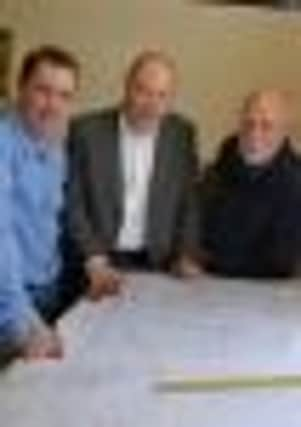The Ballygally eco house with only £300-a-year heating cost


The exciting self-build project managed by Larne architects English and Drummond on behalf of their client, Michael, who lives locally, will not even feature a conventional heating system.
The Passive Haus (Passive House) design, timber-framed property at Grace Avenue will, however, have a mechanical ventilation system with heat recovery, solar water heating and triple-glazed windows throughout. External window louvres will prevent overheating in summer.
Advertisement
Hide AdAdvertisement
Hide AdEnglish and Drummond believe that Passiv Haus will become a template for modern home construction in Northern Ireland. Dwellings designed to this specification have been built all over Europe for the past two decades, but the innovation is only starting to catch on here. The firm has just completed a design course and is awaiting certification from the Passiv Haus Institute in Germany – one of the first Ulster architects to do so.
Passiv Haus designer with English and Drummond, Jason Johnston, explained that this construction type costs only slightly more than traditional builds, but the extra outlay can be recouped in as little as six years.
“The anticipated construction time will be 20 weeks and the construction cost is approximately 10 per cent greater than a standard house constructed to meet the current building regulations,” he said.
“A passive house is a building in which a comfortable interior climate can be maintained without active heating and cooling systems. The house heats and cools itself, hence ‘passive’.
Advertisement
Hide AdAdvertisement
Hide Ad“Passive Houses are buildings in which a comfortable temperature in winter as well as in summer can be achieved with only minimal energy consumption. They are more demanding in regard to conception, design and the actual construction of the house,” the local designer added.
Asked how a house can really stay warm without a heating system, Jason replied: “Passive houses can be of timber frame or traditional block construction, large or small, they have been tried and tested for over 25 years with no heating systems: Even in middle-European climates, houses can be built with such low heating energy requirements that minimal additional heat, added to the incoming fresh air, is sufficient to keep the house warm and comfortable even in cold winters.”
The Ballygally dwelling will have a small heat source which will only heat towel rails in the bathrooms to provide any additional heat, if required, in extreme cold weather.
One of the most frequently asked questions is: Can you open windows in a passive house? English and Drummond architect Crawford Leitch explained: “Of course, occupants may open windows whenever they want; however, they won’t have to. A passive house is continuously supplied with fresh air via the ventilating system, which has advantages: unlike window vents, the ventilation system filters the air, keeping out dirt and pollen. Air quality within the house is always excellent, even when occupants are away or if windows are never opened.”
Advertisement
Hide AdAdvertisement
Hide AdCrawford added: ”In today’s world, with ever increasing fuel prices and extreme economic stresses, moving towards a more sensible, no-waste life style is an obvious choice. With a passive house, living costs are reduced and less energy is wasted. The heat generated by laptops, televisions, through cooking and even by children running around the house is all captured, saved and re-used.
“A passive house is the Rolls Royce of housing, providing all of the comforts expected today by home owners at minimal extra cost. The best building fabric is specified and the resulting house is robust, durable and feels high quality.”